Under a deep, warm, blue sky and over water so clear, fish could be seen swimming in the depths below, the MV Virginian made port at the Kuwait Naval Base on March 19, 2011. The Virginian seems like just another shipping vessel that docks here on a daily basis, however, the role it plays in U.S. military operations in this region is huge.
The 230th Sustainment Brigade, headquartered out of Chattanooga, Tenn., has many missions. One of the largest is the responsible drawdown of equipment from Iraq and this is where the Virginian comes into play.
The Virginian carries retrograde equipment. "Retrograde equipment is equipment no longer used or will not be used in the theater of operation," said Lt. Col. Thomas E. Taylor, from Nashville, Tenn. and assigned to the brigade within the Support and Plans Operations section. "So we send it back for other uses. Basically it's just a drawdown of equipment we send back to the states."
A mission like this takes about four units and six months to plan. "We do this mission once a quarter, four times a year," said Taylor. The 230th provides oversight in ensuring the retrograde equipment is ready for shipment when the vessel docks. "We also ensure we meet or exceed the number of containers going back on the vessel," said Taylor.
Today, the Virginian docked with a little more than 400 containers of incoming supplies for the region and set to reload with just less than 400 more filled with the retrograde materials.
"Tonight we are conducting deployment/redeployment operations for about 900 containers total," said 1st Lt. Arthur Stepuro, commander of the 518th Port Management Team. "The containers will be (unloaded), then proceed to the sterile lot where they will be tallied and segregated. From there on, they will continue on toward the (Transportation Security Administration) on convoys."
Stepuro said, "Once a vessel comes in, they can usually move 12 to 15 containers per hour. That's using two ships' cranes and a pier-side crane."
"It usually takes about 40 to 44 hours using three cranes to unload," said Master Sgt. Thaddeus Pool, non-commissioned officer in charge of the combined joint logistics center, and assigned to the 369th terminal supervision team, an Army Reserve unit headquartered out of Houston, Texas. "Then about the same amount of time to load that many containers. Roughly about four days to discharge and to upload it for about 500 containers."
"It takes a combined effort," said Stepuro, "including [U.S.] Navy, Marines, Coast Guard, Kuwaiti Navy, contractors from different organizations, international workers from all over the surrounding regions, 200 to 300 personnel involved in this operation alone, and that's not including over 100 truck drivers that will be working with us."
With the Virginian carrying so much retrograde equipment, the vessel plays a critical role in the responsible drawdown of Iraq. It takes a plethora of people and several combined units from all branches of the military to ensure not only the vessel is unloaded, but reloaded with as much retrograde equipment as possible in a timely manner. This maximizes the amount of time and space available to conduct the complete withdrawal of U.S. Forces and equipment from Iraq before the end of 2011.
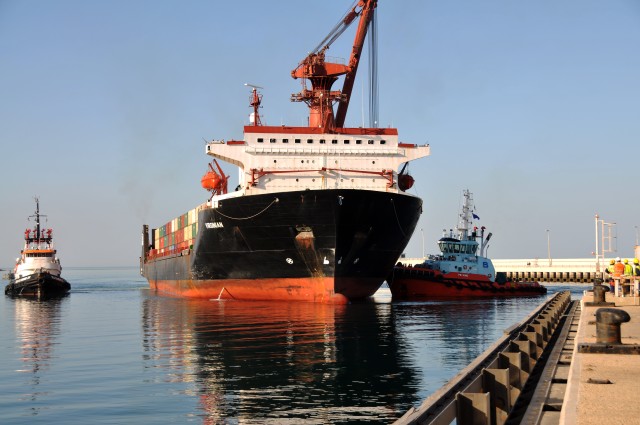
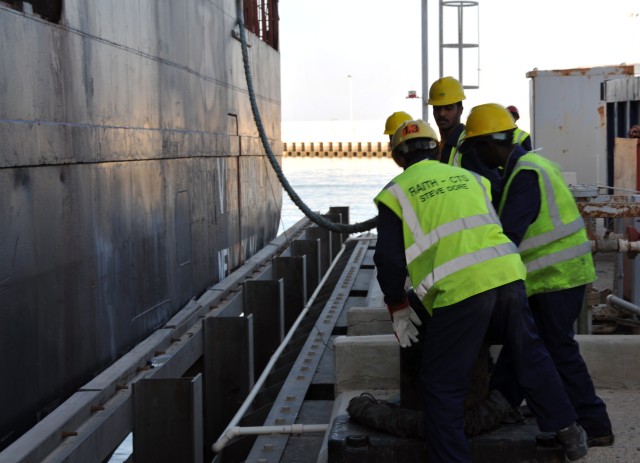
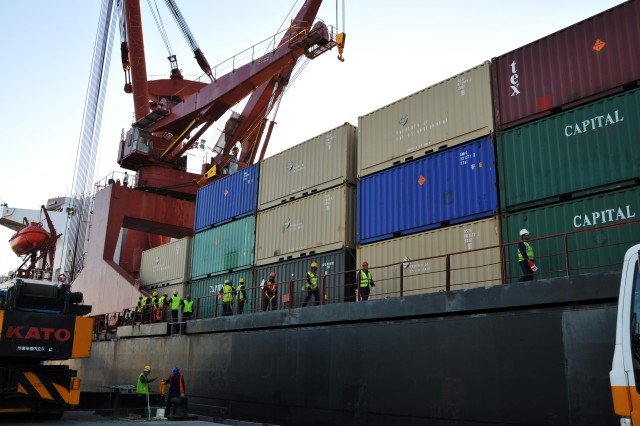
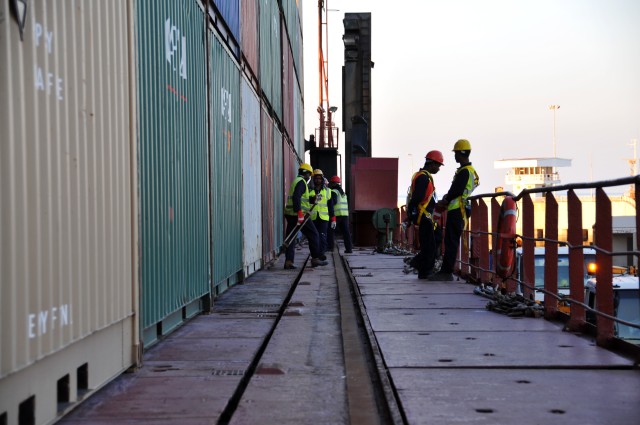

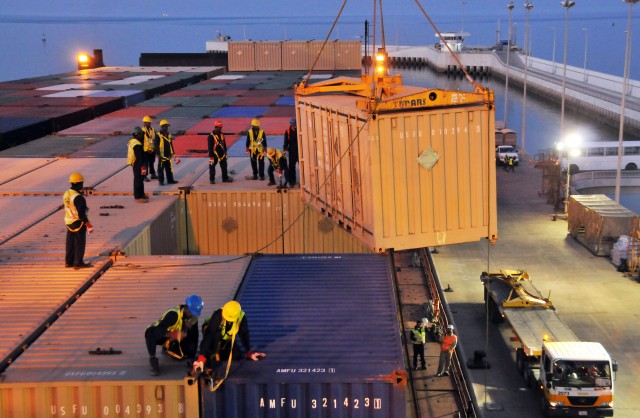



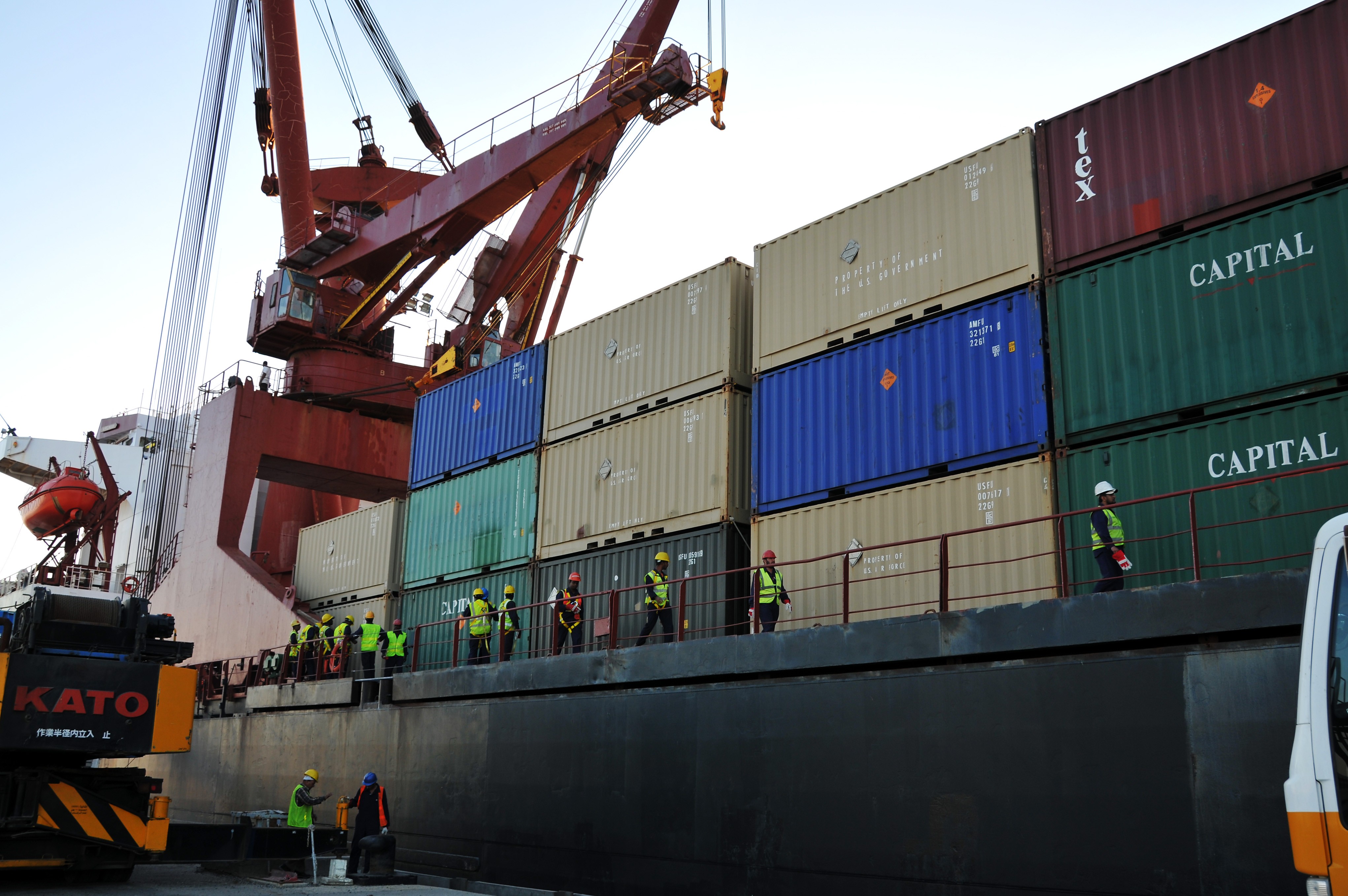

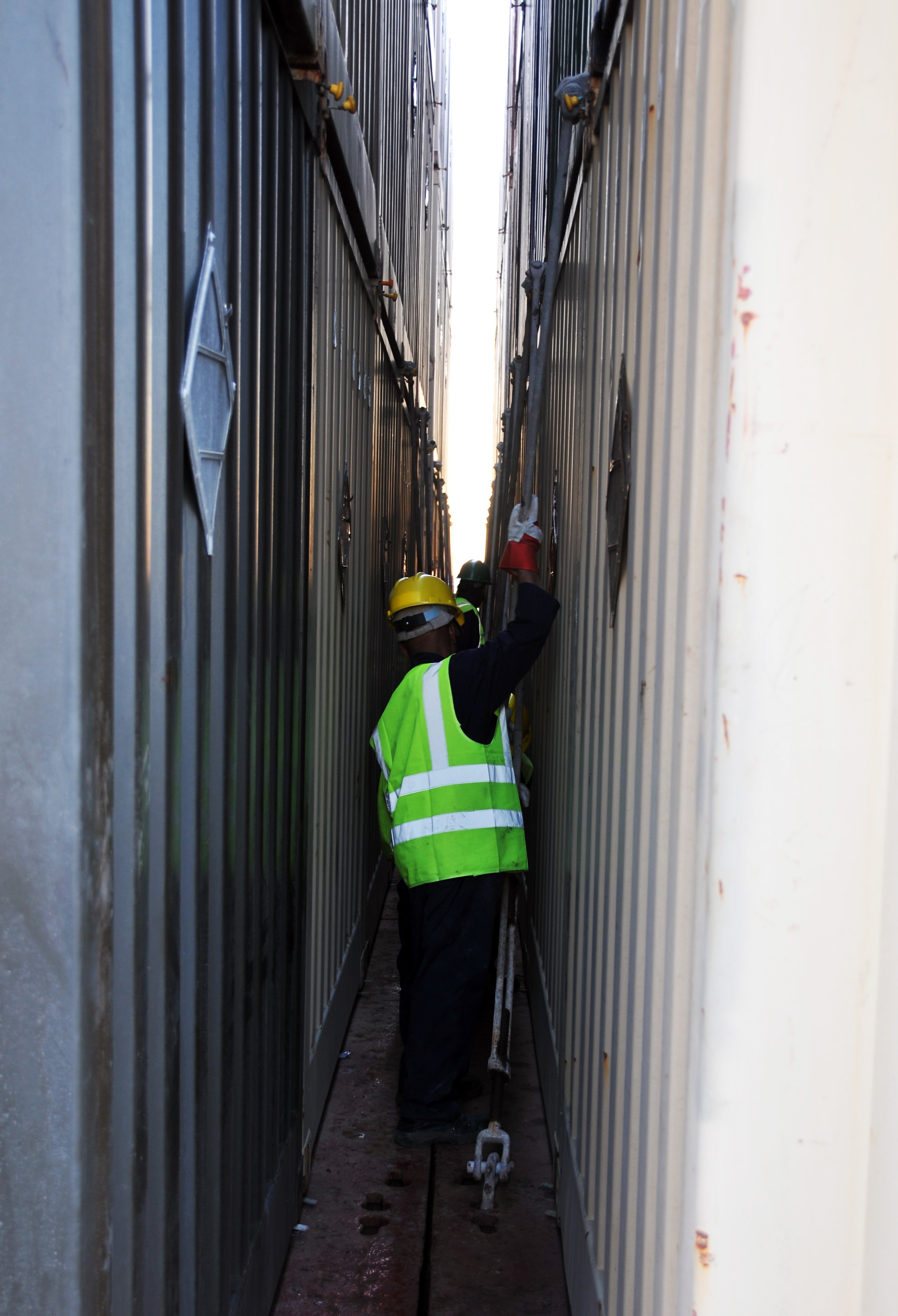


Social Sharing